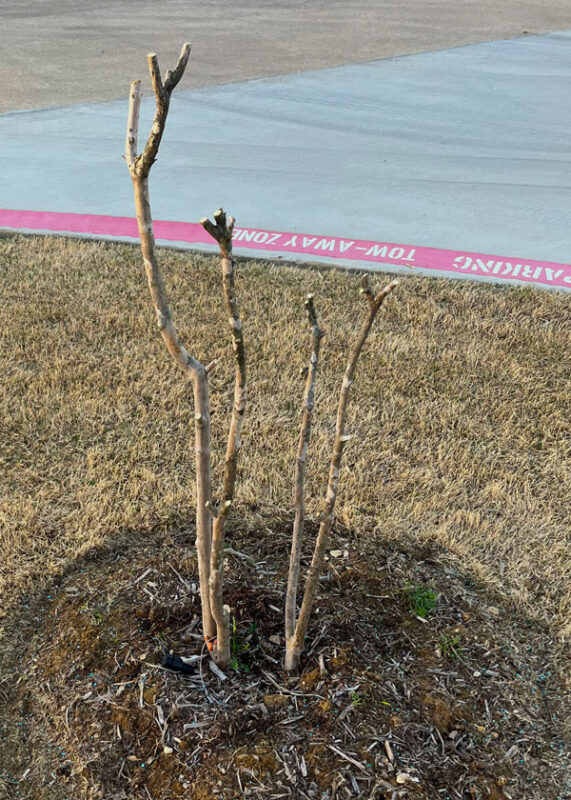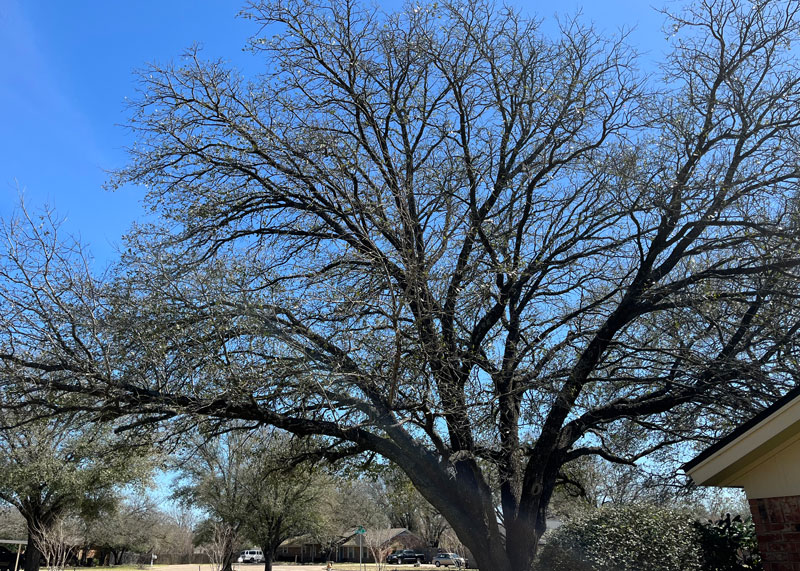Q&A – Ask Neil: March 20, 2025
(Please read these instructions carefully.)
Before you post your question, please look at recent issues to see if someone else has already asked it. You might find your answer there.
How to submit your question…
(Note: You may need to allow a pop-up window to come up in order to get the link for sending your photo(s). If you have already submitted your question and didn’t see the pop-up window, please click here.)
• Click the link provided below to post your question. After you submit your question, a new window will pop up giving you the address to which you can e-mail a SHARP, HIGH-RESOLUTION PHOTO to accompany your question. Please DO NOT SEND THUMBNAIL PHOTOS in case I need to zoom in to see things.
• Click here to post your question.
• Please ONLY POST YOUR QUESTION ONE TIME. We can only accept a set number of questions each week, and when we get duplicates it costs other people their chances.
• One question per reader, please.
• Please use this only for posting questions – not for standard emails.
• Watch for your answer in the following week’s e-gardens.
• I choose those of greatest general interest. For example, plant IDs seldom make the cut.
• I must have your first name or initials.
• I must have your city or county. (Texas is a very large state.)
QUESTION 1
CAN CLIPPINGS FROM LAWN SCALPINGS BE USED AS MULCH IN GARDEN OR FLOWERBEDS?
Question: Since so many of us are scalping our lawns this spring, can those clippings be used as mulch in our flowerbeds and garden? Mark L., Bedford.
Answer: The best place to use them would be in your compost pile so they could break down more before you put them out as a mulch. However, they could be used beneath shrubs as a second choice if you don’t have a compost. I would not put them directly into flowerbeds or a vegetable garden. There would be too much chance that they would pack down into an impenetrable layer. Not to cast doubts on your gardening skills, but there’s also the chance that they might introduce weed seeds to the gardens.
QUESTION 2
WHY DID MY PLUMS TURN FUZZY BROWN AND FALL OFF?
Question: Last year my plums, just before being ripe, turned fuzzy and brown and fell off. I used the spray plan you recommended. Was this a fungus? Danny L., Sadler.
Answer: It does sound like a fungus, perhaps brown rot. I would suggest continuing on the Texas A&M or Oklahoma State plum/peach spray program (already underway). Include a fungicide with each insecticide spray you apply. Be mindful of sprays you might make that are soon followed by spring showers. Reapply if necessary.
QUESTION 3
WHAT IS WRONG WITH MY SNAPDRAGONS?
Question: I found very few snapdragon transplants Sept.-Dec. last year. Those that I did find had limp leaves and 1-2 flowers on their tops. Once planted they did not flower normally. I saw this same performance in city parks and landscapes. They don’t even look like true snapdragons. What is going on? Diane D., Round Rock.
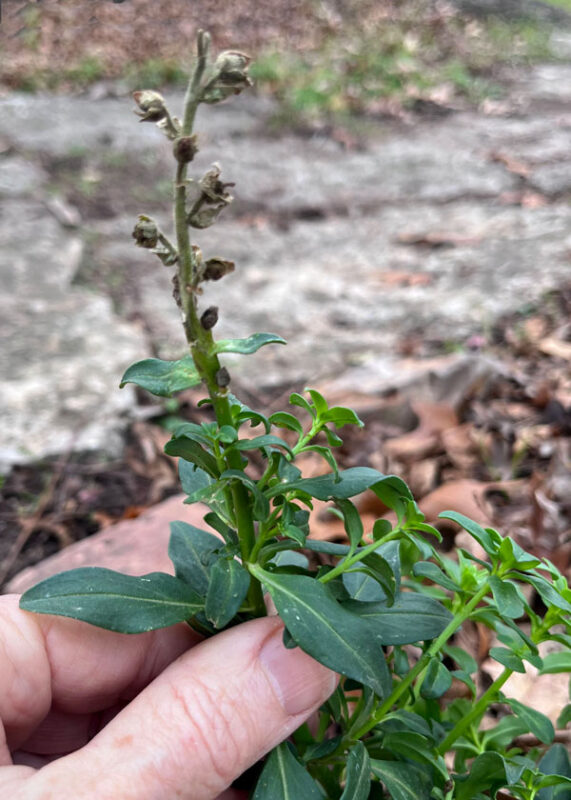

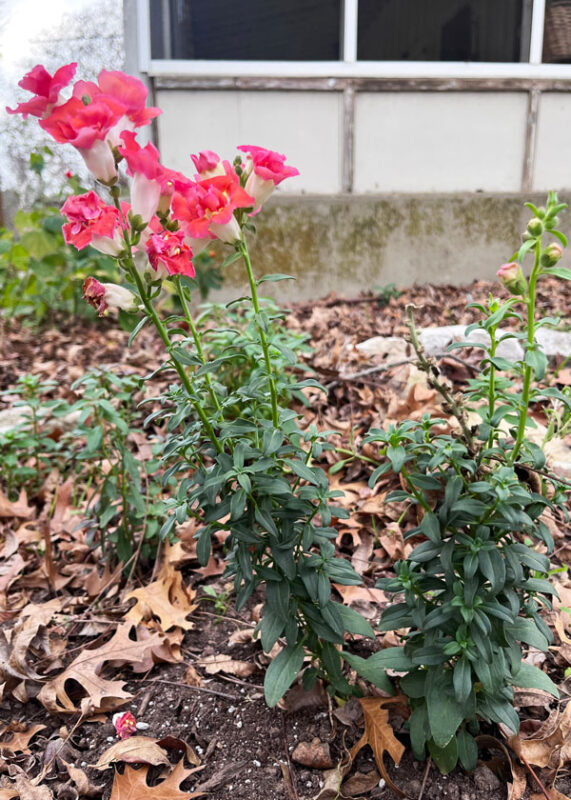
Answer: I have several thoughts for consideration.
It’s best to choose vigorous transplants that are in bud but not yet in full bloom (and certainly not plants that are stalled out in bloom). Once any transplant stalls, it will usually be sluggish in starting over again. So, that would be one possibility.
I also wonder if you had these plants covered with frost cloth. Even though you’re in Central Texas, it still was cold enough this winter to hurt plants that normally would have gotten through without issue.
Your plants also look a bit “hungry.” If they were mine I’d try cutting them back a couple of inches, then applying a water-soluble, very high-nitrogen fertilizer to give them a boost of new growth yet this spring. I can’t tell how well you prepared their soil prior to planting, but snaps benefit from loose, highly organic soil just like pansies do. It looks like the red oak leaves have been there a while, so I couldn’t tell.
QUESTION 4
HOW SHOULD WE HANDLE THESE CRAPE MYRTLES?
Question: These crape myrtles at my new business were trimmed like this after a miscommunication with our landscape company. They were supposed to be Catawba, but they are pink. Will they grow out, or do they need to be cut to the ground like you sometimes suggest? The last photo is from last year as a comparison. Dixon D., Keller.
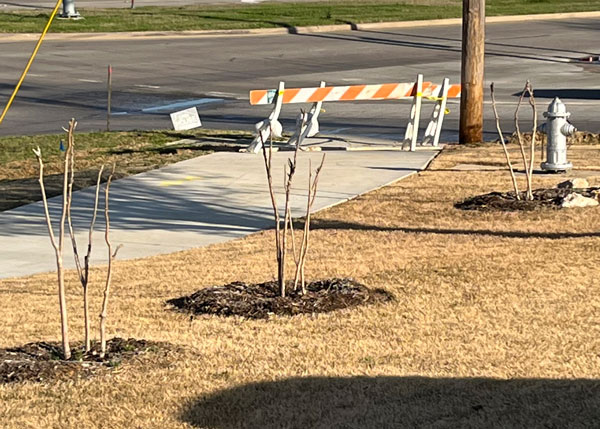
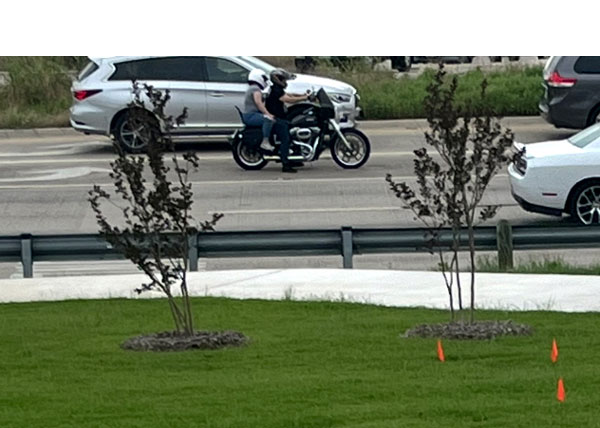
Answer: Thanks for worrying about your plants. They are young enough that they should grow out without the “scarring” that topping of older, larger trunks causes. I think you’ll be fine, although you’ll need to train the new shoots to grow in an attractive form.
As for the variety, I’m really concerned. It appears from your photo that your plants may have purplish, almost black leaves. You may have ‘Black Diamond Shell Pink,’ ‘Rhapsody in Pink,’ or one of the other very dark types. They tend to be shorter and not as flush with blooms, but I’m really guessing.
QUESTION 5
CAN I PLANT BERMUDA SEED IN MAY IF I APPLY PRE-EMERGENT GRANULES NOW?
Question: I plan to put out pre-emergent soon to prevent grassburs. If I do, can I still plant bermudagrass seed in May, or will the pre-emergent prevent germination of the grass seed? Danny H., Brady.
Answer: You should not do both. If you apply pre-emergent granules, you will inhibit root growth of the bermudagrass seeds, so that’s a deal-stopper. It’s not even a good idea if you opted to use sod instead. It would slow its root growth, too. Plus, you need that second dose “booster shot” application in 90 days after the first treatment. Get your bermuda established and deal with the grassburs as you have to. Hopefully they won’t be much of a problem. You can use pre-emergents after the lawn has been through its first winter.
Additional note: you are kinda late to be considering pre-emergent application in Brady, anyway. Next spring aim to make that application by March 15.
QUESTION 6
IS THIS LOSS OF BARK ON OUR LIVE OAK A CONCERN?
Question: I had radial shake on a live oak after the 2021 freeze with similar loss of bark. However, this chunk just showed up missing on our 30-year-old, otherwise healthy live oak. Is this a concern? Sean D., McKinney.
Answer: This looks almost exactly like the red oak trunk that Mary Ann submitted last week, so you’re not alone. Here is a link back to it (Question 4).
Anytime a chunk of bark falls off a tree’s trunk you do need to be concerned. Usually, it’s nothing to worry about because the tree is just enlarging as it grows. Bark is a dead tissue and it can do nothing more than pop and fall to the ground. However, this is different. There has been some type of injury, either from cold or by mechanical damage of being gouged or banged in some way. You can even see the effects of that damage beneath the area of lost bark. Don’t be surprised if another chunk drops off down to the ground. It never hurts to have a certified arborist look at a tree. Our advertiser here in e-gardens does serve McKinney. Note that they, and you, will be better able to assess any damage once the tree sends out its new spring foliage.
QUESTION 7
WILL MY LIVE OAKS RECOVER FROM RECENT HAIL?
Question: We recently had hail overnight. The hailstone weren’t necessarily large (penny to nickel size), but they were intense for 15-20 minutes. My live oaks were 90 percent stripped. Do you think they’ll come back? How long until new leaves come out? Randy C., Cleburne.
Answer: They’ll come back vigorously. They were on the verge of dropping all those old leaves anyway, so this just hurried things along. Apply an all-nitrogen plant food around them and water it into the soil deeply with a lawn sprinkler (not a root-watering rod). You’ll see new growth within just a couple of weeks.

